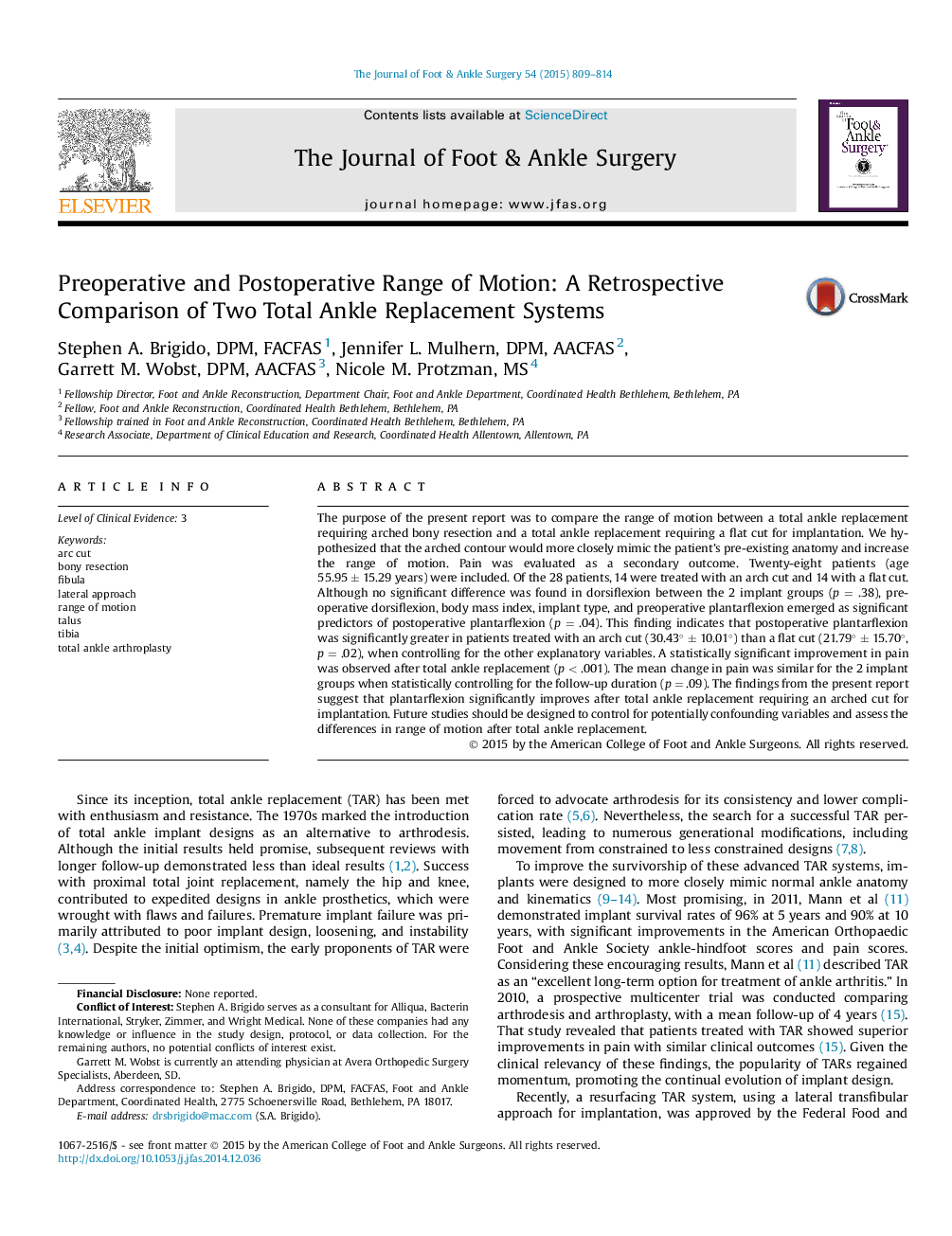| Article ID | Journal | Published Year | Pages | File Type |
|---|---|---|---|---|
| 2712995 | The Journal of Foot and Ankle Surgery | 2015 | 6 Pages |
The purpose of the present report was to compare the range of motion between a total ankle replacement requiring arched bony resection and a total ankle replacement requiring a flat cut for implantation. We hypothesized that the arched contour would more closely mimic the patient's pre-existing anatomy and increase the range of motion. Pain was evaluated as a secondary outcome. Twenty-eight patients (age 55.95 ± 15.29 years) were included. Of the 28 patients, 14 were treated with an arch cut and 14 with a flat cut. Although no significant difference was found in dorsiflexion between the 2 implant groups (p = .38), preoperative dorsiflexion, body mass index, implant type, and preoperative plantarflexion emerged as significant predictors of postoperative plantarflexion (p = .04). This finding indicates that postoperative plantarflexion was significantly greater in patients treated with an arch cut (30.43° ± 10.01°) than a flat cut (21.79° ± 15.70°, p = .02), when controlling for the other explanatory variables. A statistically significant improvement in pain was observed after total ankle replacement (p < .001). The mean change in pain was similar for the 2 implant groups when statistically controlling for the follow-up duration (p = .09). The findings from the present report suggest that plantarflexion significantly improves after total ankle replacement requiring an arched cut for implantation. Future studies should be designed to control for potentially confounding variables and assess the differences in range of motion after total ankle replacement.
